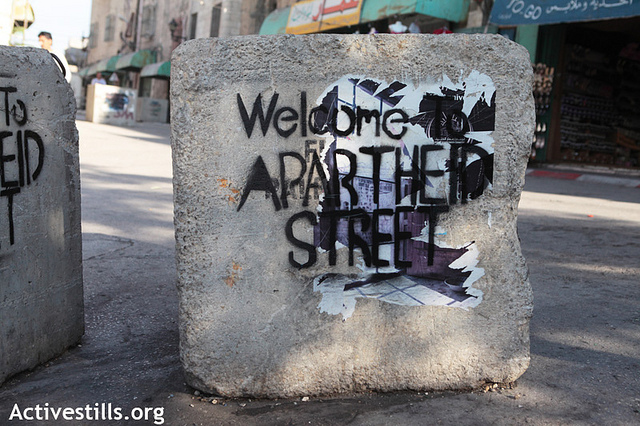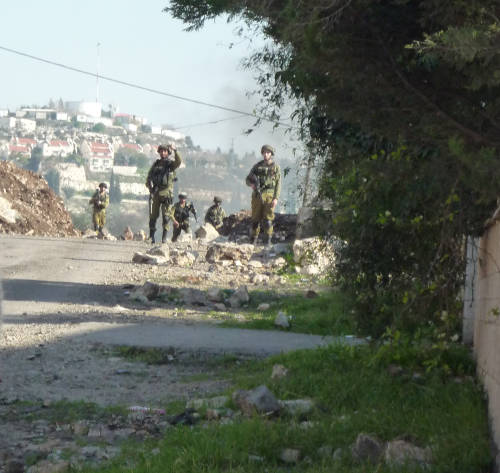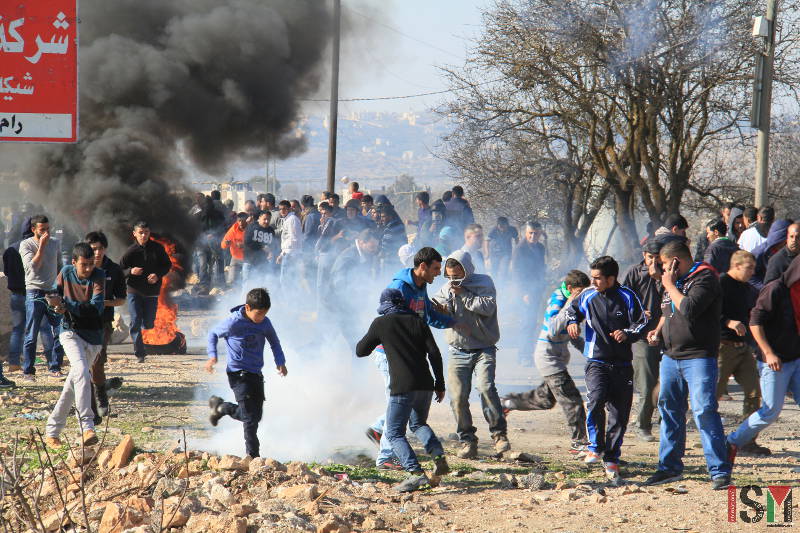Category: Features
-
ACT NOW ! Put an end to the ‘Closed Military Zone’ in Tel Rumeida and Shuhada Street, Hebron
December 13th, 2015 | International Solidarity Movement | Action Alert The undersigned organisations are calling on the international community to take immediate action regarding the continuous closure of the Tel Rumeida neighborhood and the part of Shuhada Street that has remained accessible to Palestinian residents since the Ibrahimi mosque massacre in 1994, in occupied al-Khalil…
-
4 protesters shot in Kafr Qaddum demonstration
December 11th, 2015 | International Solidarity Movement, Tulkarm team | Kafr Qaddum, occupied Palestine Friday, December 11th, in Kafr Qaddum, the Israeli occupation forces shot three young men in the legs with tutu, and a fourth youth was injured with a rubber coated steel bullet at a demonstration protesting the road closure. Two illegal Israeli…
-
22 Palestinians injured by Israeli Forces in Silwad village
On Friday the 11th of December, hundreds of protesters gathered in the village of Silwad, Ramallah area, in a demonstration demanding the return of the body of Anas Bassam Hammad who was killed on December 4th by Israeli soldiers. After the Friday prayer, the protesters marched towards the eastern entrance of the village near road…



